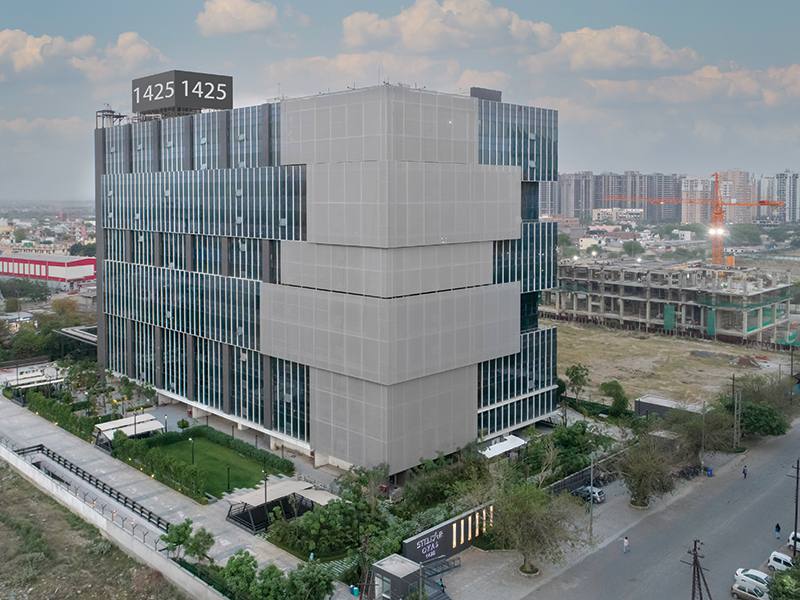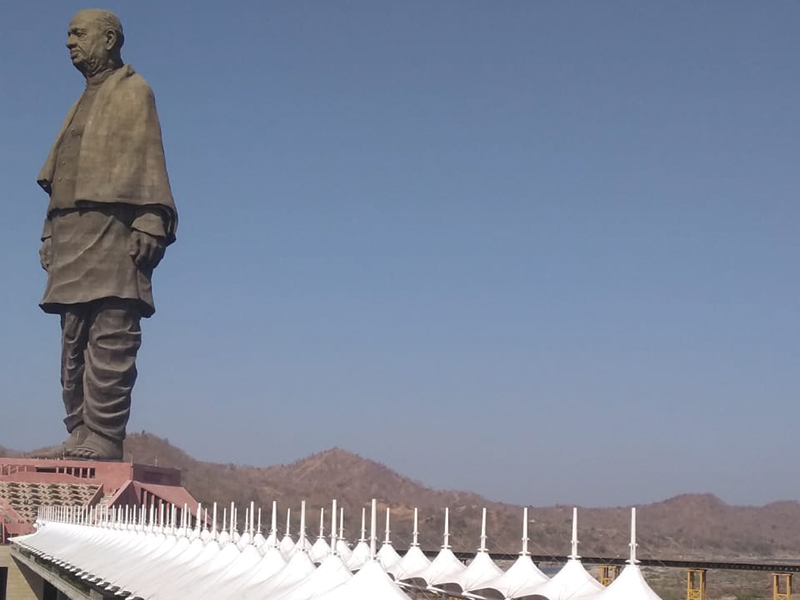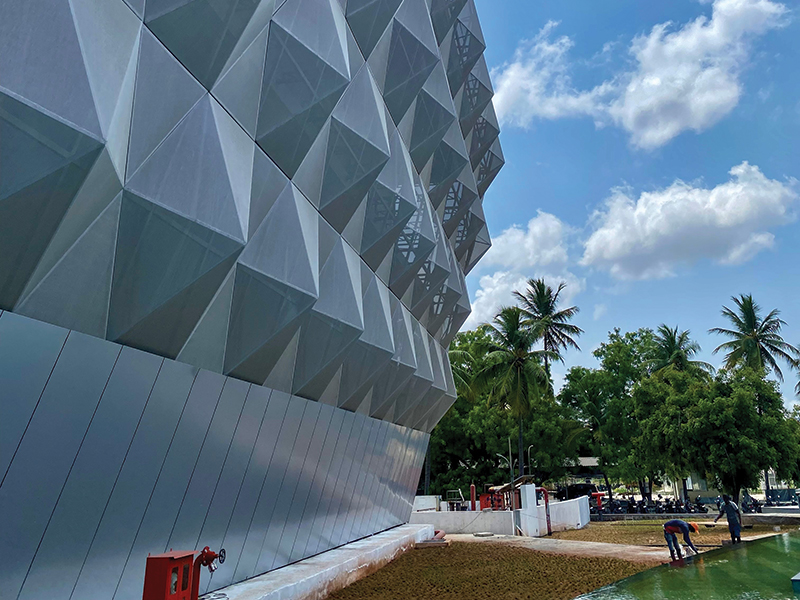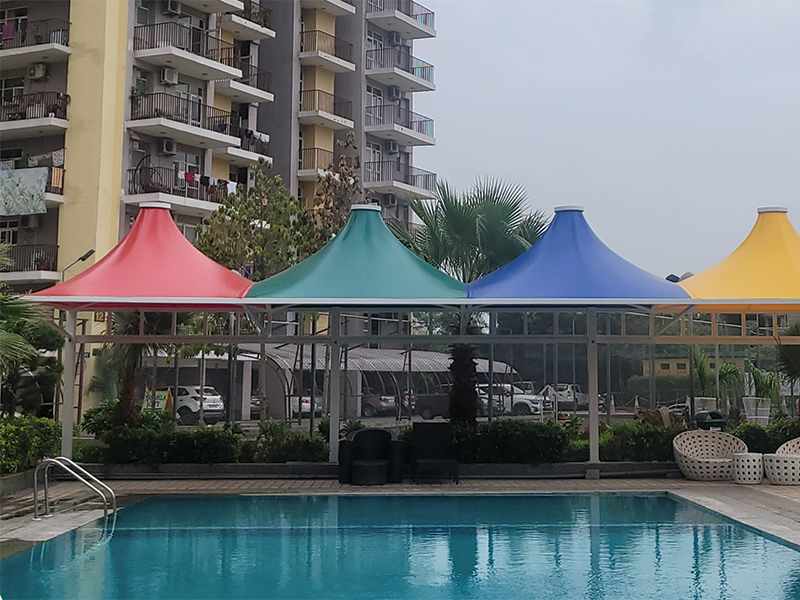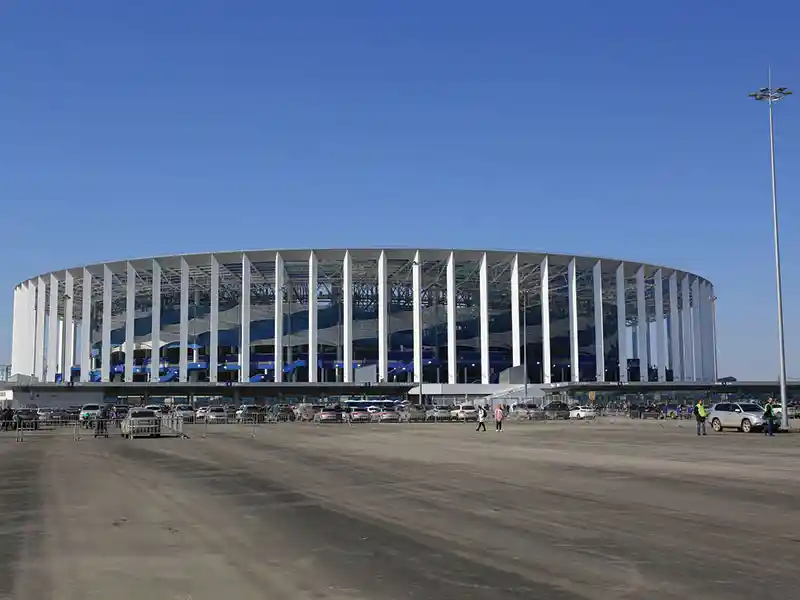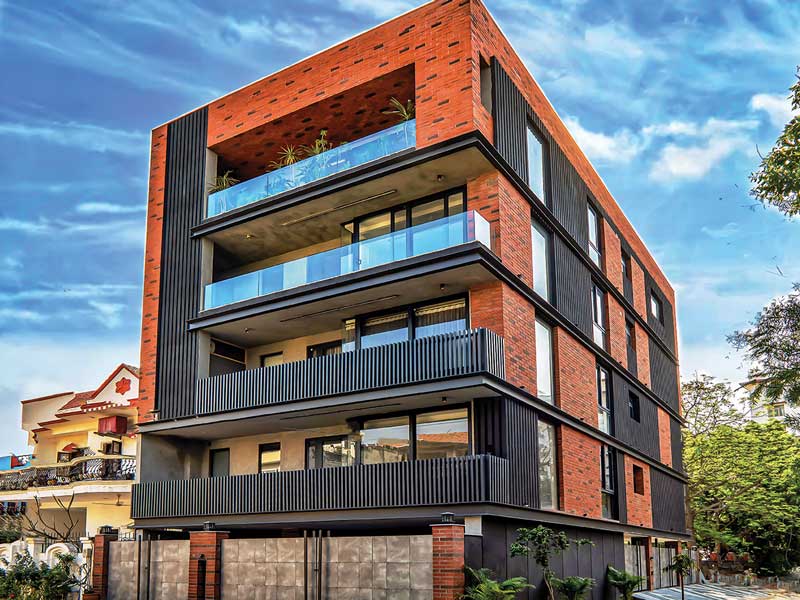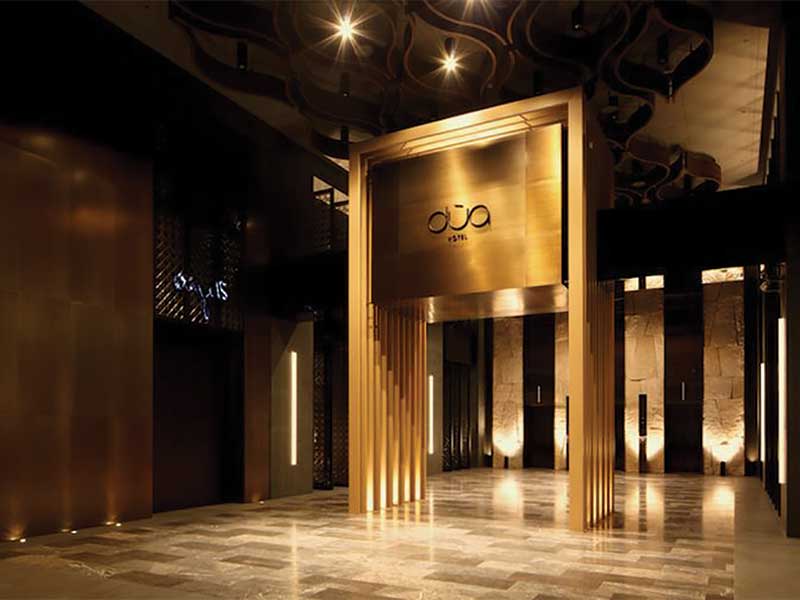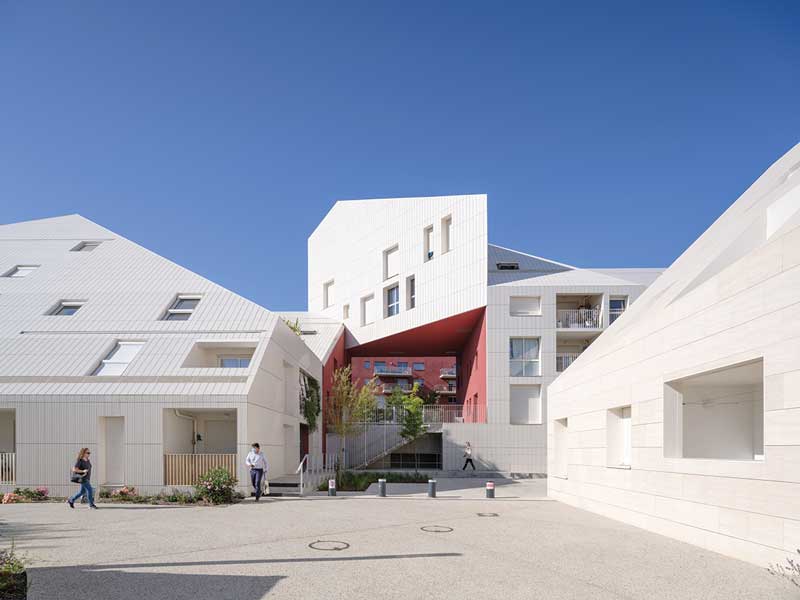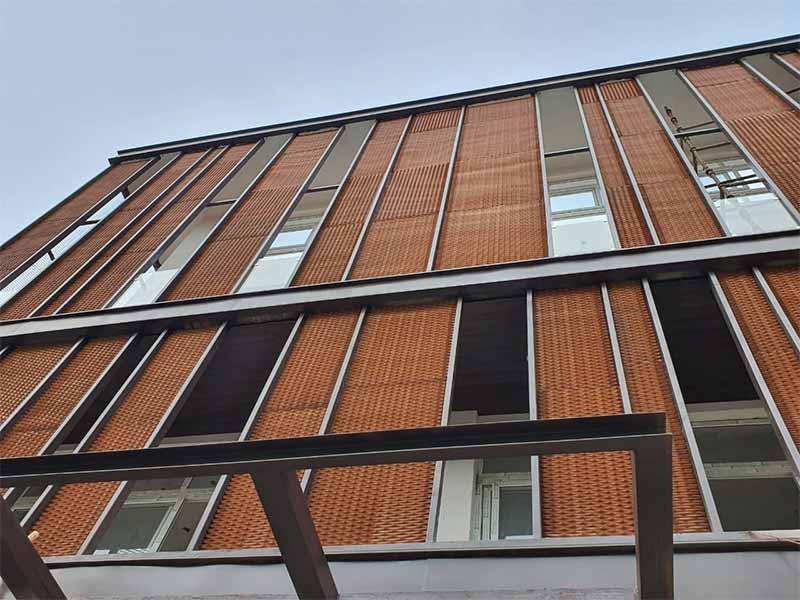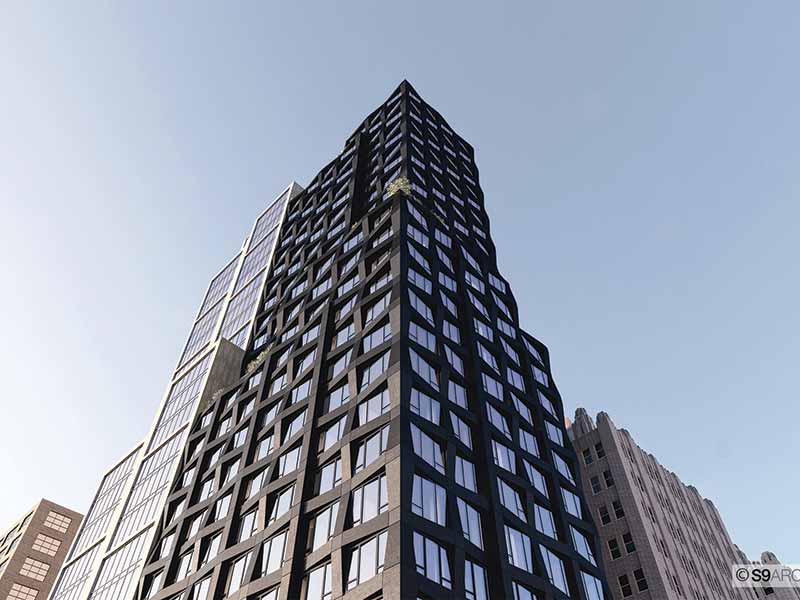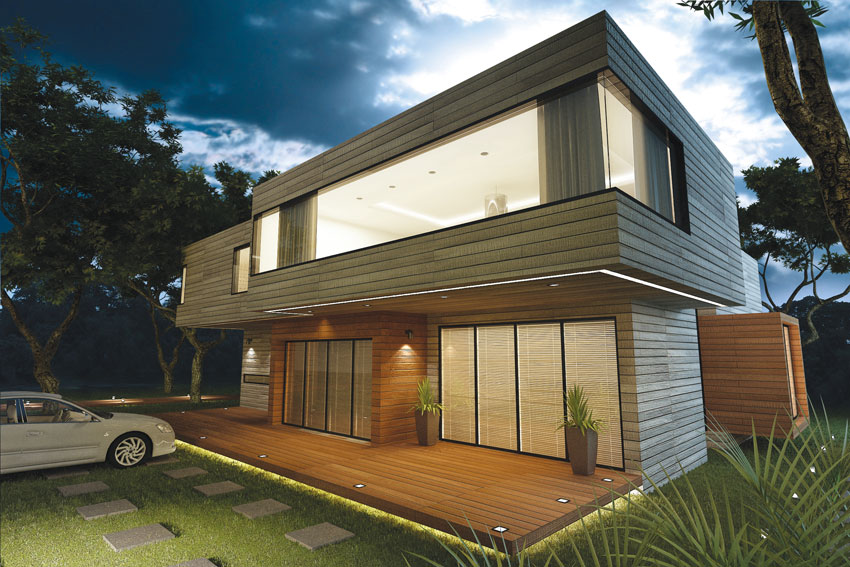
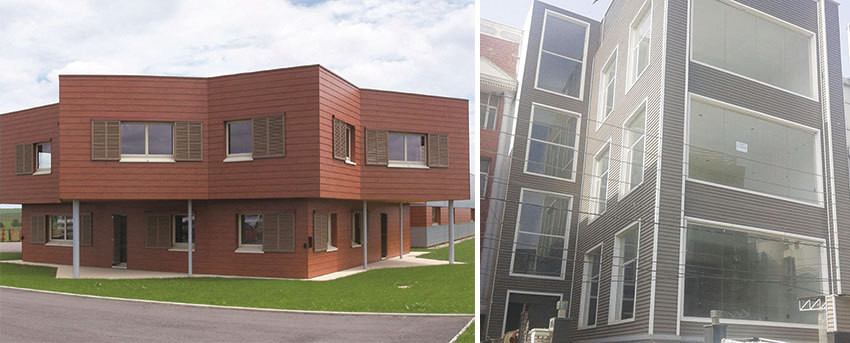
When it comes to the façade of a building, however grand or humble, builders as well as end users mostly realize that it's no more about just the looks. A killer look or an awe inspiring design must be augmented by functionality – energy efficiency, insulation capability, strength and stability, durability, ease of installation and maintenance, a competitive cost, resistance to chemicals, fire, moisture, pests, and so on. Although the traditional façade building elements such as bricks, stones, and wood are still acceptable and have a ready market, newer elements and composites around ceramic, vinyl, fiber cements, etc are rapidly gaining grounds. New materials and new technologies are constantly being experimented upon and new innovations are being warmly accepted in the market.
Better than glass
Glass has remained the pet building element for façade for many architects and construction professionals in India, and abroad because of its practical functionalities and versatile processing. It can be toughened, bent, insulated, and laminated to suit varied purposes. It is supposed to provide thermal and acoustic insulation, solar control, and fire protection. It is safe and secure, and also helps bring in transparency as well as a link between the interior and exterior space with the least adjustment. For a long time, it was considered energy efficient, especially in cold countries. Research is under way to validate this point in tropical countries too.In his thesis for the University of Southern California, "Structural Glass Facades: A Unique Building Technology," Michael Robert Patterson says: The use of glass as a component of the building envelope has been increasing since its initial introduction as a building material, accelerating in the twentieth century owing to the development of high-rise steel framing systems and curtain wall cladding techniques. Little has changed in the core technology of glass curtain walls and façades since their initial development. However, much has changed in the building arts in the past decade alone in terms of aesthetic and performance drivers, as well as in available structural systems and materials.
While glass has been found to scale greater heights and occupy more space in contemporary building technologies and systems, there are other materials that are also emerging in the scenario, which doesn't only promote energy efficiency but also cost effectiveness and ease of use.
Let's first take a look at the widening role of the façade in the backdrop of a safe, secure, energy efficient, and smart building.
Changing role of facade materials in a fragile environment
Good façade cladding should not merely accentuate the aesthetics but also serve as a shield from extremes of weather especially seen in Indian climatic conditions. This protective layer, while being functional, should also permit the building to breathe while defining its significance and character. This also means that the cladding material and system have to perform in all types of climatic conditions giving rise to more robust, energy efficient, innovative, and adaptable façade systems. It is important that the installation is also done right using the recommended and specified accessories, right tools, and trained manpower.The front runners in designing and producing façade materials are fast turning their manufacturing systems into eco-friendly ones and also spending huge amounts on research and innovation to develop the perfect green material. While a few of them offered and promoted green products as early as in the 1990s, many have taken up the cue now and are working tirelessly to plug the new set of market requirements.
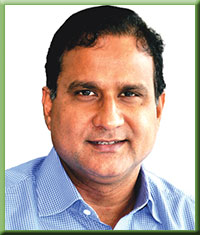
He mentions that it is important for all parties in the industry to understand and push for green technology – in materials as well as designs and structures. This will not only make this Earth a better place to live in, but will also promote and motivate the industry players towards engineering more effective sustainable innovations.'
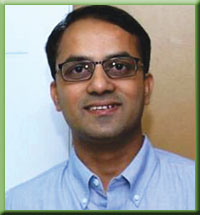
Mr Harish V. Holalu, Business Manager, CertainTeed, Saint-Gobain, Grindwell Norton Ltd, corroborates Mr Upadhyay's views. He says, "Green materials are definitely the future. It is imperative to come up with solutions that are functional and eco-friendly. Sustainability of a product, on the other hand, is an outcome of a lot of decision factors that are considered during various stages of design and material selection, manufacturing processes, transportation, application, and post maintenance operations related to a product. Hence it is a 'cradle to grave' process which also encompasses the climatic changes, recycling and energy-saving attributes."
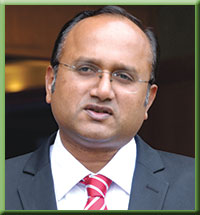
Façade materials and systems are expected to carry out a number of functions and perform in a variety of ways. Features like structural integrity, durability, weather-tightness, acoustic insulation, thermal insulation, safety and security barriers are key, thinks Dr. Prashanth Reddy, Managing Director, FunderMax India Private Limited. He explains, "Façade systems today have to be flexible enough to allow the architect the freedom to use his creativity to give shape to his imagination. A good façade system will allow the designer to make perforations, bend the material without affecting its strength and structural stability. It should also allow the designer the option to print his own design onto the cladding material. And it should also be sustainable, in every way."
Innovative sustainable materials for the façade
With the emergence of new materials and new technologies, and people's constant pursuit of different building appearances, the market for façade fabrication has become bigger in size. A vast variety of new materials, such as high pressure laminates (HPL), UHPC (Ultra High Performing Concrete), Carbon Fiber, Corten Steel, ETFE Membranes and Solid Surfaces are available due to the technical advances in recent years, states Dr Reddy. He confirms, "Adherence to the strictest energy and quality parameters has given rise to more energy efficient, innovative, and adaptable façade cladding materials and systems. Yet, a thorough assessment of durability of new materials should be done to ensure that the materials used do not compromise the performance requirements of the building."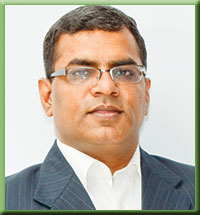
Agrees Mr Holalu. The demand for using out of the box, innovative products and designs is certainly more than ever before, he confirms. He contributes this change to a variety of factors including involvement of foreign consultants in local projects and having NRIs or expats as end-customers. "Also people from all segments, be it builders, architects or end-customers, are getting exposed to new-age technologies through the various digital media platforms and joint ventures," he adds.
In the last few years the construction industry and the architecture fraternity have increasingly displayed green and environment-friendly leanings, thinks Mr Upadhyay too. He thanks the policies, projects, and events conducted by the government as well as the Confederation of Indian Industries (CII) for creating awareness around using green products in the construction industry. He says, "Builders not only find these products sustainable but also greatly useful in meeting laid down timelines, reducing efforts, and increasing cost efficiency, energy and thermal insulation. On the other hand, architects and interior designers view these products as being environment-friendly, cost efficient, and most importantly, useful in the execution of innovative and imaginative designs."
Four new and improved façade materials
We introduce here four new age products that can meet the above mentioned criteria for façade building materials.Aerocon from HIL Ltd
"HIL studied industry trends and realized the importance of adopting green technologies way back in 1997. It sowed the seeds for new green alternatives in the form of panels and AAC blocks, to existing conventional building materials. Today, this cluster of solutions is known as Aerocon and the product-line comprises dry wall solutions, wet wall solutions, and plumbing solutions," states Mr Upadhyay.Aerocon Sandwich panels are dry wall solutions that are pre-cured, high-performance, light-weight, easy- and ready-to-install. These offer excellent resistance to fire, moisture, corrosion, and termites and also provide commendable sound and thermal insulation saving up to 15% energy costs. Ideal for half and full height partitions, pre-fabricated structures, and mezzanine floors, Aerocon Sandwich panels are strong enough to hold the weight of air-conditioners, television sets, audio equipment and other common loads. A smart spin-off of the reduced panel thickness is that the carpet area is maximized. A new range of products that includes Cement Boards, Flex-o-Boards, Smartbond (a superior quality panel jointing mortar), and mineral Fiber Ceiling Tiles (MFCT) has been recently launched under this category.
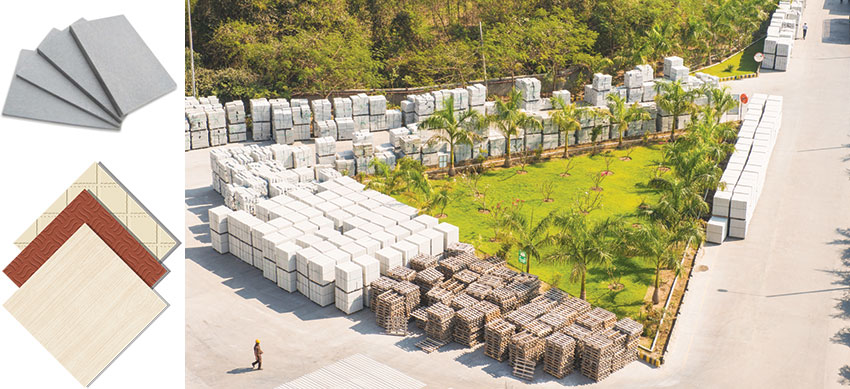
Mr Upadhyay adds, "HIL is attempting to make Aerocon a complete material solutions provider for green walling solutions. The introduction of new products mentioned above is the first step towards it and the R&D team is relentlessly working towards newer innovations."
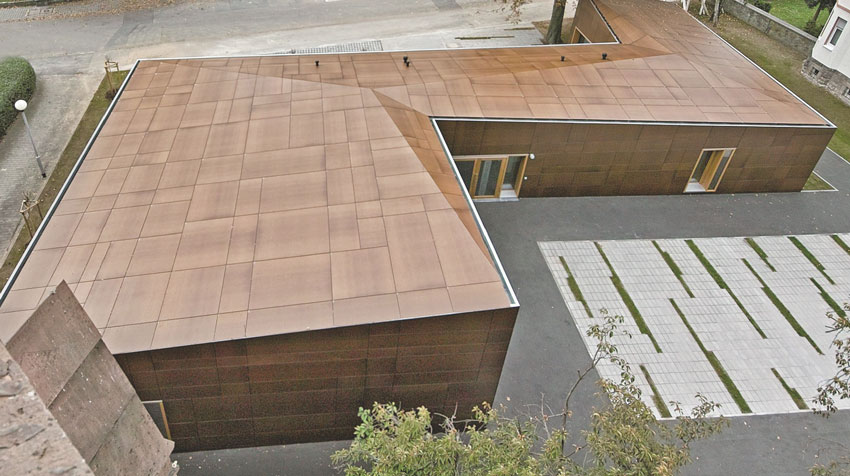
The Max Exterior Range from Fundermax
FunderMax, owned by Constantia Industries AG, primarily deals in wood processing and offers wooden high pressure laminates (HPL) to the Indian building and construction industry. It attempts to educate the Indian market about latest technologies in façade cladding, such as the Rear Ventilated Façade Cladding Systems."Conforming to its tagline, "for people who create," FunderMax tries to assess the requirements and preferences of the architects and launch new products based on the international evolving trends," says Dr Reddy. Their latest offering, the Max Exterior range of decors, launched in 2015 was created after taking inputs from prominent architects all across the world.
The new collection from FunderMax has a total of over 30,000 SKUs for architects offering high design freedom and the entire collection is available in India. Products offered in India for exterior applications include Max Exterior F Quality, and various elements such as lap siding and perforated panels, in different surfaces like glossy, matte, textures, individual, and customized digital prints.
FunderMax has made considerable investments in R&D for producing sustainable products. With 65% of the panels being made from natural fibre that consist mainly wood that is processed into craft and décor papers', the Max Exterior Panels are totally sustainable.
The panels are also free of organic halogen compounds that are found in greenhouse gases and PVC. They are free of asbestos and wood protection agents as well as sulphur, mercury, and cadmium.
Dr Reddy says, "The exhaust air generated during the drying process used in the preparation of the panels is treated through regenerative thermal oxidation for which FunderMax was given the Klima:aktiv award for best practices by the Austrian Energy Agency and Austrian Federal Ministry of Environment. This process reduces the carbon emissions at the production site to the tune of circa 10,000 tons per annum."
The finished product is weatherproof, optimally lightfast, highly durable and can be combined with almost every kind of FunderMax décor.
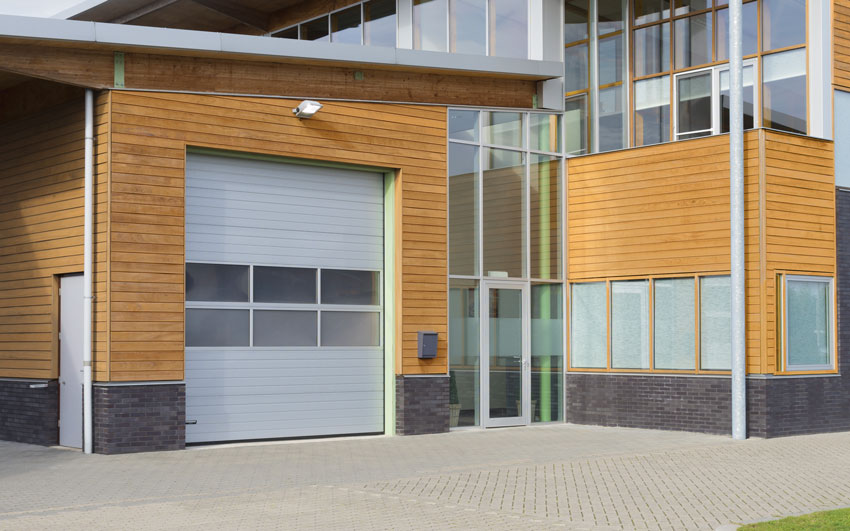
Zykron from Centuryply
"Currently, we have launched a product called Zykron. Under this brand name, we are offering Siding, which is good for the exterior façade. It gives perfect finish to the exterior of the building and comes with colored and natural variants. In case of natural variants, it can be painted with any shade that the customers choose," informs Mr Shah.He explains that presently in India, the building façade market is dominated by ACP or Glass. In case of ACP, the scope of changing the façade is less as cost is high. Also, over a period of time, the color tends to fade. Hence, there is a market requirement for low cost but good quality material for façade, and the Zykron-Siding is designed to plug this market requirement.
The Zykron-Siding is a fiber cement product and it is manufactured through an eco-friendly process. It has good thermal resistant and acoustic properties. As it is a good thermal resistant product, it keeps the building cooler than conventional façade materials. The product is also termite and insect resistant, fire resistant, has low shrinkage and warping, immune to water damage, carries a 50 years warranty, and lends nicely to decorative designs with texture imitating plates.
It has a wide usage and can be happily used as tile substrates, flooring, and underlay, kitchen counters and backsplashes, for roofing, shingles, and shales, as weatherboard façade and cladding and in prefabricated houses. It can also be used in exterior and interior partition walls, for acoustic and thermal insulation, and in ceilings and underside surfaces. They are mainly available in 8' x 4' sheets with 4 mm to 20 mm thickness.
Vinyl Sidings from Saint Gobain
"Facades have witnessed several changes calling for a greater innovation. They are no longer being used as mere cladding-material but also play a key-role in the overall functionality and desired aesthetics of the building. Therefore, we at Saint-Gobain have introduced a very unique cladding product- Vinyl Sidings, which is widely used in North America and several other parts of the world," informs Mr Holalu.Vinyl sidings are primarily blended polyvinyl chloride (PVC) extrusions, in the form of sheets, which are modified during manufacturing with stabilizers, pigments and acrylic agents and finally extruded to give the finished product important attributes like UV resistance, color stability, and durability.
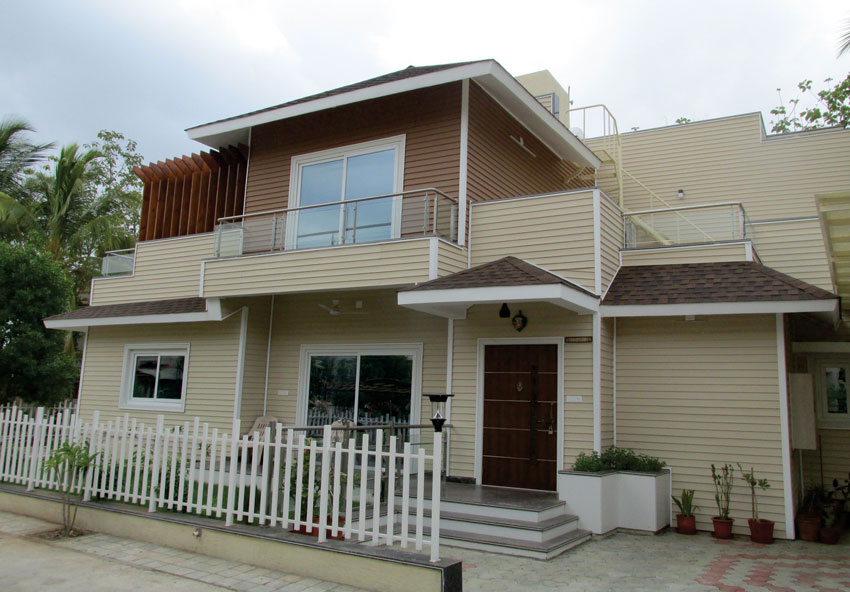
Additionally, they are available in various designs and colors that give users umpteen options to choose from. Hence, an overall multi-comfort performance, both functionally and aesthetically, is successfully delivered by Vinyl Sidings. This product comes under the CertainTeed brand and has been used both in residential projects and commercial buildings successfully. Its key features such as minimal maintenance, sustenance to extreme weather fluctuations, life lasting performance, ease and fast installation, etc have made it quite popular among its users.
With a simplistic design and virtually zero-maintenance properties, Vinyl Sidings score high on sustainability. Their ease of application on any plane wall with minimum 16mm thickness, high resistant towards environmental degradation and elimination of future maintenance processes have led to its being durable and energy saving.
The ever expanding market for innovative façade components
"The façade cladding industry in India is undergoing many changes in terms of functionality and performance parameters", states Dr Reddy. The adherence to the strictest energy and quality parameters and norms have given rise to more robust, energy efficient, innovative, and adaptable façade systems, such as the Back Ventilated Façade System, Double Skin Façade System, Louvers Façade Systems, and Energy Efficient Façade Cladding Systems.At the same time, there has been a change in the spending pattern of the Indian consumer as well. Indian consumers today are price sensitive but equally value conscious. They are willing to pay premium prices for products that are robust, durable, yet aesthetic.
"These trends make the Indian façade cladding industry comparable with the international market today, though we see that the Indian market needs some education and awareness and time to adapt as far as the latest façade installation systems are concerned," says Dr Reddy. He also informs that the total size of the façade market in India is estimated to be around 80 million square meters per annum, with glass materials holding the major share, followed by stone, granite and marble being abundantly available locally and at relatively low costs. These are followed by Aluminum Composite Panels (ACPs), and around 5 percent is held by the new generation materials like HPL, Fiber cement boards and natural woods like IPE.
Mr Shah corroborates the facts saying, use of fibre cement façade is new in India but the scope is huge and the Indian market is rapidly growing. In India, the market is valued at over 1 billion USD and is growing 10-12% annually.
Mr Upadhyay informs that the dry walling market size for panels is roughly 85,000 metric tonnes per annum and the wet-walling market size stands at roughly 45 lakh cum. Government initiatives like Swachh Bharat Abhiyan, 100 smart cities, and Make in India are increasing the demand for these products further, he suggested. "The construction industry and the architecture fraternity have always been open to using innovative facades and it has only manifold over the recent years. Interestingly, even the end-customers today do not shy away from experimenting new-age facades which promise elements of multi-comfort," joins Mr Holalu.
Conclusion
Green technology and sustainable building materials are fast becoming a niche and a cool trend. End users, especially those high on the social ladder, are choosing to make a statement through the products they use and the investments they make. A trend is emerging to show that they prefer driving electric cars and living in energy efficient houses, the faces of which are the building's façade. Architects and building industry professionals agree that a shift towards more sustainable, green building materials is evident and the market is fast expanding.Parameters like adaptability to different geographic zones, fade resistance, and longevity are important deciding factors during the selection of façade materials. This has resulted in developing facades which impart multi-comfort elements and are versatile for various applications. The core functional idea of façades is to work with nature rather than to try and resist its influences. Today's architects not only have to take into consideration technical aspects when designing a façade but also must look at the design aspects which give a superior aesthetic appeal and uniqueness in design and at the same time be energy efficient.
Swati Sanyal Tarafdar is a writer and journalist based out of Vijayawada, Andhra Pradesh, India. She writes about a myriad of subjects ranging across health, education, sustainability, business, and industry.
